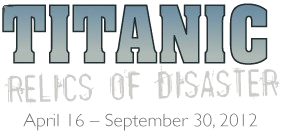100 Years Later: Titanic in the Archive 1912-2012
ON APRIL 10, 1912 the SS Titanic embarked on its maiden voyage sailing from Southampton, and bound for New York under the command of experienced Captain Edward Smith. Despite numerous warnings of icebergs from other vessels, Captain Smith assumed that the icebergs could be detected from the lookout and did not reduce speed. This decision would have disastrous consequences. On April 14 at 11:40 pm, 409 nautical miles off Cape Race, Newfoundland & Labrador, the liner collided with an iceberg and sank 2 hours and 40 minutes later.
The role played by the Cape Race wireless station is legendary – wireless operator J.C.C. Goodwin received the first distress signal CQD at 10:25 pm (EST). However, there is some speculation that a 14 year old James Myrick actually received the first CQD. The station then went on to assist as much as possible; helping to coordinate the rescue effort and to relay messages to an anxious public.

Created to assist and encourage further research, The Rooms presents some of the documents, photographs and published materials that are available at The Rooms Provincial Archives relating to the Titanic disaster and the subsequent response, including additional research sources and information relating to the disaster.

This small exhibit explores Newfoundland’s connections with the disastrous 1912 sinking through related artifacts, documents and images from the Rooms’ collections. From distress messages received at Cape Race, to items recovered at sea in the search for bodies, these relics tell their own story of the deadliest peacetime maritime disaster in history.